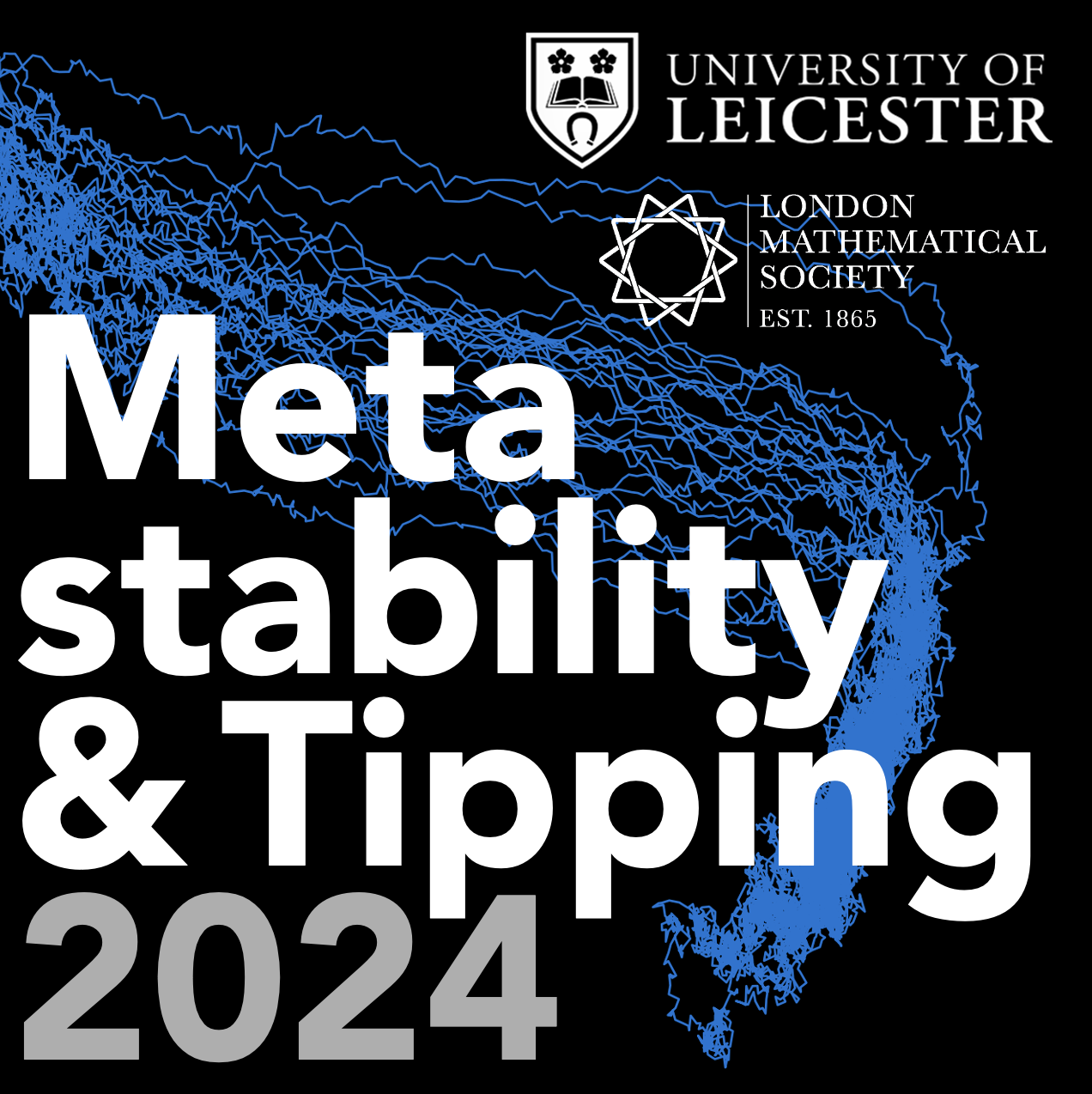Metastability and Tipping in Complex Systems
Many real-world complex systems are metastable: they possess states that are typically long-lived but between which the system may switch spontaneously, either through noise-induced transitions between coexisting attracting states or due to transient phenomena. Such transitions may occur frequently on the time scale of interest, e.g. in chemical reactions, gene regulation and brain activity, or represent potential high-impact, low-probability events such as climate tipping points, ecosystem shifts or stock market crashes. Identifying transient metastable states and anticipating critical transitions (tipping) has become a key research focus in applied mathematics, driven by the need for advanced techniques to meet today's societal challenges.
Mathematically, metastable systems are often modelled as stochastic differential equations composed of a deterministic drift and a stochastic forcing representing unresolved processes. This framework allows to study the local and global stability properties of the underlying system via dynamical systems theory, while the stochastic perturbations cause the system to eventually explore its entire state space, enabling a probabilistic treatment of the system's long-term evolution. In chaotic systems, the role of non-attracting chaotic sets for transient dynamics is increasingly recognised.
However, many theoretical results on random and chaotic dynamical systems rely on restrictive assumptions that do not necessarily hold for the real systems of interest. For example, classical early-warning indicators of critical transitions rest on specific noise properties and highly simplified bifurcation structures. While the special case of equilibrium dynamics with weak additive Gaussian white noise is mathematically well understood, most complex systems are inherently non-equilibrium and may feature strongly non-Gaussian fluctuations. Real systems are also generically non-autonomous due to time-dependent external forcing, contrasting established theories that require autonomous dynamics. This challenges the general validity of popular theoretical approaches, despite their successful application to many cases.
In recent years, much work has addressed these limitations. Statistical early-warning indicators have been proposed for state- and time-dependent noise as well as rate-dependent forcing. An understanding of tipping behaviour under heavy-tailed Lévy noise has been developed. Applying concepts of large deviation theory, novel numerical algorithms enable more efficient sampling of rare events and the construction of unstable states. Such tools have been used to explore the global stability landscape of complex systems and the paths of transitions between metastable states.
This conference seeks to bring together the variety of mathematical advances aiming to understand and predict metastable systems -- within and beyond standard assumptions. We anticipate contributions on topics such as large deviation theory, transition path sampling and theory, rare event simulation, first-exit problems, quasipotentials, non-attracting chaotic sets, stochastic differential equations, state-dependent and degenerate stochastic processes, non-Gaussian noise laws, and early-warning indicators. Given the broad interdisciplinary relevance and fast development of this theme, it is crucial to connect different fields and work towards a unifying mathematical language.
